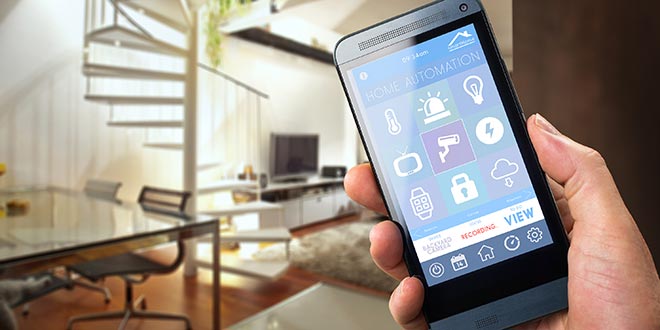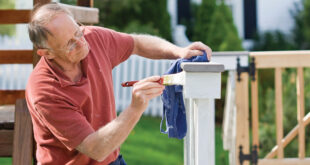If you sell smart thermostats, you’re already dabbling in the smart home category. Now may be the right time to go a little deeper. Smart home technology is going mainstream. Last year, a survey by Coldwell Banker Real Estate found that 45 percent of Americans own some type of smart home technology. Those numbers are expected to continue to climb throughout 2017. If you’re wondering what to bring into your store next, here are three trends to consider.
Voice Control
If the object can be controlled by the user’s voice, consumers want it. A new survey from Coldwell Banker said that 72 percent of Americans who have smart home products want voice control. That included customers of all ages, from millennials to Baby Boomers. Most of them (57 percent) wanted to use voice control for entertainment systems, but a third of consumers responding to the survey said they wanted voice control for lighting and security products. When you’re deciding which smart-home products to bring in your store, look for those with a voice control feature.
Safety and Security Devices
You likely already sell a lot of devices that keep the home safe: smoke detectors, carbon monoxide detectors and moisture detectors. The next generation of these items do the same task, but they send the signal to the user no matter where they are. Items that make the home more secure can also include smart locks and doorbells, which make it easier for the homeowner to see who’s at the door. Security systems are also popular. Homeowners with a set of security cameras connected to a smart phone or other device can save a lot of money over a monitored system. This is a big reason consumers install smart home devices. Stocking these items is a natural fit for home improvement retailers.
Interconnectivity
Having smart home devices that communicate with each other will be more important to consumers. Homeowners will no longer need to have multiple remote controls that operate different devices throughout the home. In the ideal world of tomorrow, homeowners will be able to control multiple items from one device.
However, all of the items they purchase for the home must use the same operating system. When you sell smart home devices, make sure they are compatible with each other and share the same hub. The hub is the piece of hardware that connects all of the smart devices in a home and controls the communication among them. For the devices you sell, know what hub customers should buy to control them. You might even consider stocking this, too.
 Hardware Retailing The Industry's Source for Insights and Information
Hardware Retailing The Industry's Source for Insights and Information








